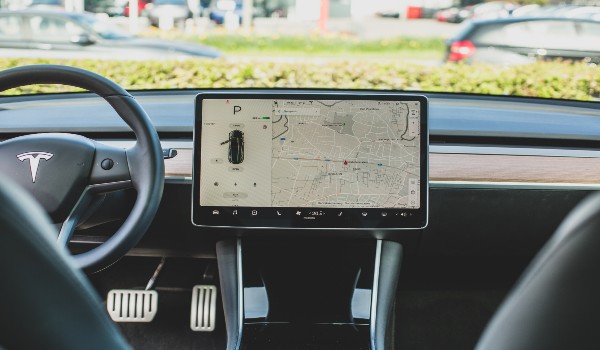Make no mistake, we are facing an automated future. It is predicted that by 2050, almost all vehicles will be autonomous, changing transportation as we know it. Self-driving vehicles will create a cleaner, safer, and smarter driving experience, resulting in less congestion and fewer collisions.
To gain a better sense of what to expect, we have delved into three key trends that have a significant influence on AV adoption: machine learning, Vehicle-to-Everything communication, and assurance requirements.
machine Learning
Automated vehicles would not exist without machine learning (ML). It works by collecting data from sensors to predict changes in the surroundings and deciding on an appropriate action to take.
Machine learning (ML) is being used to input into the development of autonomous-vehicle technology, working to ensure that self-driving vehicles can operate safely. This includes in areas such as:
- Safety: human error is the biggest cause of fatal car crashes. Removing this human factor with autonomous vehicles could reduce avoidable fatalities.
- Cost: automated vehicles offer the potential for significant cost reduction, including lower driver costs and potential for increased efficiencies.
- Data points from vehicle powertrains: machine learning can improve the efficiency of electric vehicles, optimising with data points obtained from vehicle powertrains. This can help improve motor control and battery management.
- Safety of autonomous vehicles: AI and ML will play a key role in keeping autonomous vehicles safe- perhaps the most vital consideration for increased uptake of autonomous vehicles. Increased intelligent electrification can also increase safety with collision warning systems and blind spot detection.
Machine Learning and AI also improves opportunities for detection, classification, and driver monitoring.
However, ML can wrongly identify objects so it is not always accurate, which can jeopardize the driver's safety. Inputting more data, particularly training data, can improve the accuracy of object identification and reduce biased perception.
The more data, the more accuracy.
Vehicle-to-Everything
AI creates a new level of connectivity. Vehicle-to-Everything (V2X) is a communication system that enables information to travel between traffic systems and vehicles.
Sensors such as radars, cameras, and highly reliable links allow automated vehicles to communicate with an intelligent transportation system (ITS). VTX can alert a vehicle to road conditions and allow it to make quick decisions from the information it receives.
Read More:
The role of sand-casting in the future of transport
The innovation of Tesla's Giga casting
Vehicles can also connect with other vehicles (V2V), which enables them to communicate with one another through Wi-Fi and 4G wireless connectivity, allowing information on road and weather conditions to be shared. Impressively, V2V can help to reduce collisions by alerting drivers to vehicles that are hidden from view around a corner or hill.

As a result, V2X can improve road safety and traffic efficiency, with many leading car manufacturers already starting to use V2X technology to produce smarter vehicles.
But, it will take a long time before we can fully benefit from V2X systems, as most traditional vehicles and traffic systems are not yet equipped with V2X technology. The market must expand first.
Assurance Requirements
Unfortunately, unclear regulations are a roadblock to large-scale uptake of autonomous vehicles. Globally, there is a lack of AV safety guidelines, with policies differing from country to country.
It is not until a universal framework is agreed upon that AVs can be manufactured safely. Assurance requirements are therefore crucial for both manufacturers and consumers.
Cyber security is also a major concern for AVs, with security policies and assessments needed to prevent cyberattacks. It is crucial that automakers, security experts, and policy makers cooperate together in order to make the public feel safe to gain their trust.
Overview
Autonomous vehicles are spurring on new technology that we are sure to benefit from. It can offer an extensive collection of data that can be used to build smart cities and intelligent transportation systems.
Crucially, it can make driving safer by enabling communication between vehicles and transport systems, eliminating human error in the process.
Widespread uptake of AVs still has a long way to go, with a need for better safety guidelines and ML accuracy, but AVs undoubtedly have the potential to improve the future of transport.
Want to learn more about the future of transport? Download our free ebook Making EV Components with Sand Casting.


 Get in touch
Get in touch

